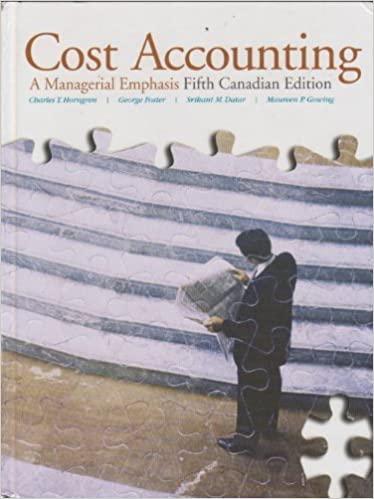Joint cost allocation with a byproduct. The Cumberland Mine is a small mine that extracts coal in
Question:
Joint cost allocation with a byproduct. The Cumberland Mine is a small mine that extracts coal in central Alberta. Each tonne of coal mined is 40% Grade A coal, 40% Grade B coal, 1. Joint costs tbe charged to and 20% coal tar. All output is sold immediately to a local utility. In May, Cumberland mined __ pint products, $7,000 1,000 tonnes of coal. It spent $10,000 on the mining process. Grade A coal sells for $100 per tonne. Grade B coal sells for $60 per tonne. Cumberland gets one-quarter of a vat of coal tar from each tonne of coal tar processed. The coal tar sells for $60 per vat. Cumberland treats Grade A and Grade B coal as joint products, and treats coal tar as a byproduct.
REQUIRED 1. Assume that Cumberland allocates the joint costs to Grade A and Grade B coal using the sales value at splitoff method and accounts for the byproduct using the production method.
What is the inventoriable cost for each product and Cumberland’s gross margin?
2. Assume that Cumberland allocates the joint costs to Grade A and Grade B coal using the sales value at splitoff method and accounts for the byproduct using the sales method.
What is the inventoriable cost for each product and Cumberland’s gross margin?
3. Discuss the difference between the two methods of accounting for byproducts, focusing on what conditions are necessary to use each method.
LO1
Step by Step Answer:

Cost Accounting A Managerial Emphasis
ISBN: 9780135004937
5th Canadian Edition
Authors: Charles T. Horngren, Foster George, Srikand M. Datar, Maureen P. Gowing





